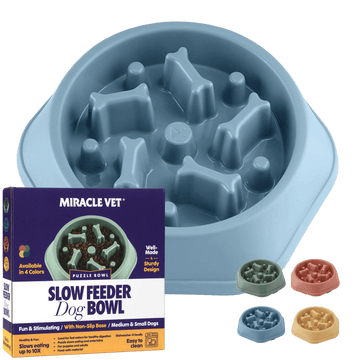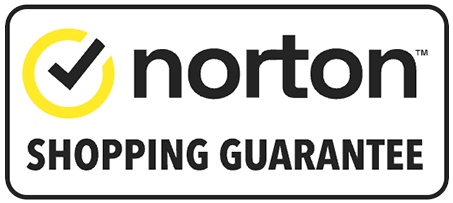
Correcting Bad Behavior
Having a puppy or adult dog that misbehaves can be frustrating. No doubt about it. There are ways to properly correct behavior and break bad habits but unfortunately a lot of people make mistakes.
If you do not correct the dog in the right way it is easy to reinforce the bad behavior, scare the dog, or just plain not be effective. It may be easier to fix behavioral issues in puppies but you CAN teach an old dog new tricks.
Dominance without intimidation
First things first, you should not strike your dog or yell at him/her. No matter how frustrated you get it is important to stay in control.
You can be assertive without getting physical. Dogs relate physical punishment with fear and aggression, emotions you do not want your dog to feel. A study from the University of Wisconsin showed that 43% of dogs responded with aggression to being hit or kicked1.
Not only will this make your dog less happy but increases the risk of a future bite to yourself, a family member, or stranger. There is no faster way to make a good dog go bad than striking them.
You want your dog to always feel comfortable while staying within the boundaries you set. A dog living in fear of you may not only become aggressive but also misbehave in an almost defiant way.
When you first bring your dog home
The first thing you should start with is establishing yourself as the authority figure. You want the dog to know you are the one in charge.
Being calm and firm is the best way to express displeasure with your dog and assert yourself as the owner. You also want to set some rules for your dog or pup as soon as you bring them home.
Establishing rules for your dog will help them see you as the authority figure. You do not need to be strict but if you let the dog get away with everything it is much tougher to break their habits later on than if you start off with rules and establish the hierarchy of your home.
Don’t want the dog on your new couch? Never let them up there. If they do jump up you can pick the dog up and place them on the floor, not striking your dog does not mean you cannot touch or physically guide them to demonstrate a desired behavior.
It is also extremely important to be consistent. If you allow your dog to jump on you, but then correct them when they jump on a guest in your home, they will not understand what they did wrong.
If you do not want your dog to jump you need to correct them every time they do it. Allowing your dog to do something sometimes but not other times will not work. Consistency is key.
Teach your dog “no”
One of the most important things you can teach your dog is the word “no.” This will allow you to correct the dog without striking or yelling. Personally, when I correct my dog all I do is snap my fingers to get her attention and when she looks at me I just say “NO” in an authoritative tone but without raising my voice.
Teaching your dog the word no should be one of your top priorities and is not a difficult thing to do.
There are several ways to do this, I did this with my dog (who I adopted at one year old) by putting her on a leash, and placing one of her favorite treats on the floor about 5 feet away.
When she started to walk towards it I gently pulled back on the leash and said no, preventing her from getting to it. When she stopped I would reward her with affection.
I would then let the leash go slack and when she started moving towards the food again I repeated the correction. I worked with her like this for about 10-20 minutes at a time, once a day and it took about three days for her to understand.
Once your dog grasps the word no it can be applied to just about any situation.
Touching your dog during a correction
As we already established, you should never strike your dog. This does not mean all touch is bad when correcting your dog.
One great way to perform a physical correction is a tug of the collar. There is a huge difference between a tug and a yank, you do not want to cause the dog any pain, but saying “NO” as you put two fingers inside their collar and give a gentle tug will help reinforce your correction without scaring or hurting the pup.
Similar to teaching a dog to sit where you say “sit” as you push their butt gently down to demonstrate the move. They will equate the touch with what you are saying.
After the correction
Show your dog what you want. We have established the fact that you need to tell your dog no, but what comes after that?
Showing them what you want of course! A couple easy examples of this are housebreaking and chewing.
When the new pup soils your carpet, hold the dog next to it and say “no” as you give their collar a tug, read their body language and when they understand you are correcting them immediately take them outside. Once you have them outside you can show affection.
They will begin to associate the behavior with the difference in how you treat it inside vs. outside the home. This needs to be repeated every time it happens. Once again consistency is key.
It is always better to catch them in the act, but if not as soon as you notice the accident immediately take them to the spot, say no, then take the dog outside. Some dogs are harder to housebreak than others but if you keep at it there is no reason why your dog won’t catch on.
Same goes for chewing, puppies tend to chew a lot and cannot understand what they are allowed to chew on and that nice new pair of sneakers you just got. When your dog does this say no as you take the pair of shoes or whatever they are chewing on away from them and give them one of their toys.
Having plenty of toys around helps also by giving them options that they are allowed to chew on.
Once your dog understands the word “no” and the item is removed and replaced with something they can chew on they will understand.
One mistake some people make is to say “they already destroyed it, might as well let him keep it.” Never do this, always take away the item they are chewing on and do not let them keep it.
In summation, never strike or scream at your dog. Keep calm and firm, teach your dog “NO” and show them what you want them to do. Keep at it and you will break any bad habit they may have and, as always, consistency is key.
1:http://www.patriciamcconnell.com/theotherendoftheleash/confrontational-techniques-elicit-aggression









